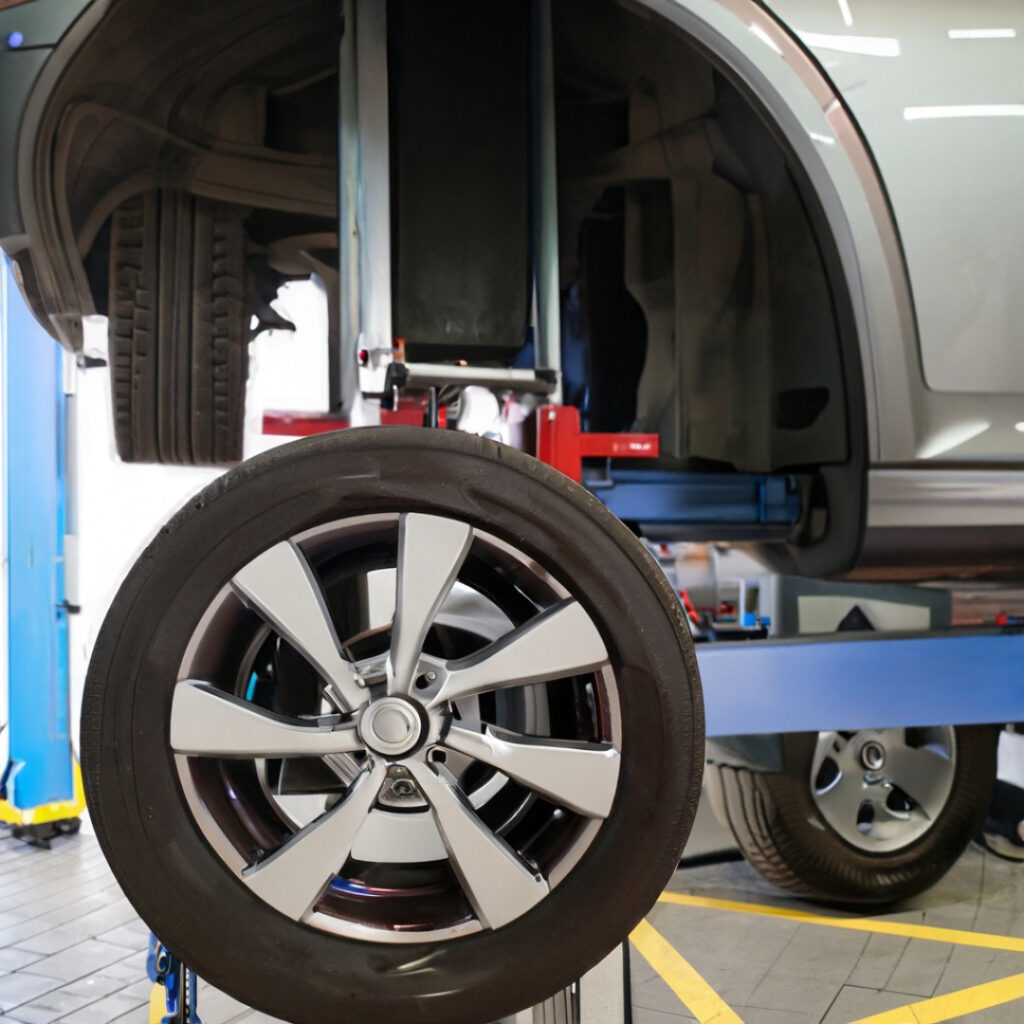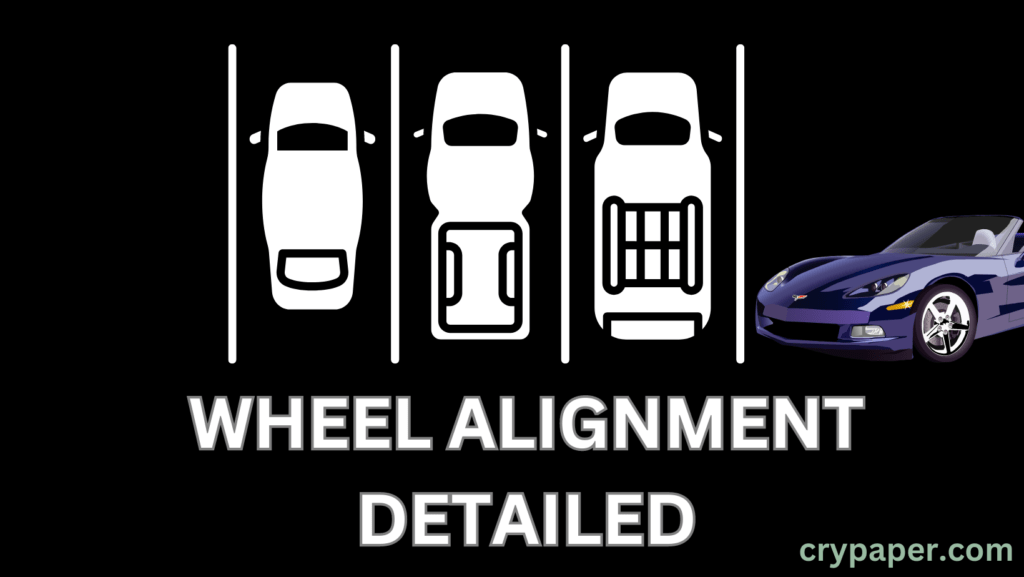
In this article we are covering the issues and solutions of Volkswagen wheel alignment also you are going to learn detailed information related to wheel alignment and advanced levels of technology.
I. Introduction To Volkswagen Wheel Alignment
Volkswagen vehicles are known for their exceptional performance and safety features. To ensure these qualities are maintained, proper wheel alignment is crucial.
This perfect guide will explore the detailed importance of wheel alignment in Volkswagen vehicles, and also here you know about how it improves performance and safety and provide a step-by-step overview of the alignment process.
II. Understanding Volkswagen Wheel Alignment
Volkswagen Wheel alignment relates to the adjustment of the angles of the wheels relative to each other and the adjustment of the vehicle's body. It’s important in maintaining stability, handling, and tire wear.
The key components involved in wheel alignment are camber, toe, and caster angles. Proper alignment means the wheels are parallel and perpendicular to the ground, optimizing vehicle performance.
Altogether there are three main types of wheel alignment:
A. Front-End Volkswagen Wheel Alignment
Front-end alignment also called a two-wheel alignment, involves adjusting only the front wheels' angles. This type of alignment is suitable for vehicles with a non-adjustable rear suspension.
B. Four-Wheel Volkswagen Wheel Alignment
Four-wheel alignment includes adjusting all four wheels' angles to ensure they are parallel and perpendicular to each other. This type of alignment is ideal for vehicles with independent rear suspension or all-wheel drive.
C. Thrust Volkswagen Wheel Alignment
Thrust Volkswagen Wheel Alignment checks and adjusts the vehicle's thrust angle, which is the angle between the rear axle’s centerline and the vehicle's centerline. It ensures that all four wheels are aligned and the vehicle moves straight.

III. Signs of Misaligned Wheels
Recognizing the symptoms of misaligned wheels is crucial for timely intervention. Here are some common indicators of wheel misalignment in Volkswagen vehicles:
A. Uneven Tire Wear and Tread Patterns
Misaligned wheels can cause uneven tire wear, with certain areas of the tire wearing out faster than others. Look for signs of excessive wear on the inner or outer edges of the tire and irregular tread patterns.
B. Vehicle Pulling to One Side While Driving
If your Volkswagen tends to pull to one side even when the steering wheel is centered, it could indicate misaligned wheels. This can lead to poor handling and compromise your safety on the road.
C. Vibrations in the Steering Wheel or Vehicle
Misaligned wheels can cause vibrations to transmit through the steering wheel or the entire vehicle. These vibrations can be felt while driving, especially at higher speeds.
D. Steering Wheel Off-Center When Driving Straight
When the wheels are properly aligned, the steering wheel should be centered when driving straight. If it appears off-center, it may be a sign of wheel misalignment.

IV. Causes of Wheel Misalignment in Volkswagen Vehicles
Several factors can contribute to wheel misalignment in Volkswagen vehicles:
A. Normal Wear and Tear
Over time, the suspension components and steering system can experience wear and tear, leading to wheel misalignment. Regular maintenance can help minimize this issue.
B. Pot Holes, Speed Bumps, and Other Road Hazards
Hitting potholes, speed bumps, and other road hazards can jolt the wheels out of alignment. It's essential to be cautious while driving and avoid such obstacles whenever possible.
C. Suspension System Issues
Faulty or worn-out suspension components can affect wheel alignment. Damaged springs, struts, or control arms can lead to misaligned wheels.
D. Collision or Accidents
In the event of a collision or accident, the impact can disrupt the wheel alignment. It is crucial to have the alignment checked and corrected after such incidents.
V. Importance of A Regular Volkswagen Wheel Alignment
A regular wheel alignment offers numerous benefits for Volkswagen vehicles:
A. Enhanced Handling and Steering Response
Properly aligned wheels provide improved handling and responsiveness, ensuring a smooth and controlled driving experience. It enhances overall stability and reduces the risk of accidents.
B. Improved Fuel Efficiency
Misaligned wheels cause increased rolling resistance, forcing the engine to work harder. By aligning the wheels, you can optimize fuel efficiency and save on fuel costs.
C. Extended Tire Lifespan
When wheels are misaligned, certain areas of the tires experience excessive wear. By maintaining proper alignment, you can extend the lifespan of your tires, saving money on frequent replacements.
D. Prevention of Premature Suspension and Steering Component Wear
Misaligned wheels put additional stress on the suspension and steering components, causing them to wear out faster. Regular alignment helps prevent premature wear and tear, saving you from costly repairs.
VI. Wheel Alignment Process for Volkswagen Vehicles
The wheel alignment process for Volkswagen vehicles typically involves the following steps:
A. Pre-alignment Inspection and Assessment
A certified technician will inspect your Volkswagen to assess the current wheel alignment condition and identify any potential issues that need to be addressed.
B. Adjustment of Camber, Toe, and Caster Angles
Based on the inspection, the technician will adjust the camber, toe, and caster angles to bring them within the manufacturer's specifications. This step ensures that the wheels are properly aligned.
C. Use of Computerized Alignment Equipment
Modern alignment equipment utilizes advanced computer systems to precisely measure and adjust the wheel angles. This technology ensures accuracy and efficiency during the Volkswagen Wheel Alignment process.
D. Calibration of Advanced Driver Assistance Systems (ADAS)
Volkswagen vehicles often feature advanced driver assistance systems that rely on precise Volkswagen Wheel Alignment. After the alignment, the technician will calibrate these systems to ensure their proper functioning.

VII. Choosing a Qualified Wheel Alignment Service Provider
When selecting a wheel alignment service provider for your Volkswagen, consider the following factors:
A. Certified Technicians with Volkswagen Expertise
Ensure that the service provider has certified technicians with expertise in Volkswagen vehicles. Their knowledge and experience will guarantee accurate alignment and proper handling.
B. State-of-the-Art Alignment Equipment
Look for a service provider equipped with modern, computerized alignment equipment. This ensures precise measurements and adjustments, leading to optimal alignment results.
C. Positive Customer Reviews and Reputation
Check online reviews and seek recommendations to gauge the service provider's reputation. Positive customer feedback indicates their competence and reliability.
D. Warranty Coverage for Alignment Services
Choose a service provider that offers warranty coverage for their alignment services. This ensures that any issues arising from the alignment will be resolved without additional costs.
VIII. DIY Wheel Alignment: Pros and Cons
While professional alignment is recommended, some Volkswagen owners may consider DIY wheel alignment. Here are the pros and cons to consider:
A. Pros of Performing Volkswagen Wheel Alignment at Home
DIY wheel alignment allows you to save money on service costs and have greater control over the process. It can be a viable option for those with basic automotive knowledge and the necessary tools.
B. Potential Risks and Limitations of DIY Volkswagen Wheel Alignment
Performing wheel alignment without proper training and equipment can lead to inaccurate adjustments, resulting in further alignment issues. It may also void any existing warranties and compromise vehicle safety.
C. Recommendations for Volkswagen Owners
If you choose to perform DIY wheel alignment, it is crucial to thoroughly research the process and follow manufacturer guidelines. However, for optimal results and safety, professional alignment is highly recommended.
IX. Frequently Asked Questions (FAQs)
1. What is the recommended frequency for wheel alignment in Volkswagen vehicles?
Wheel alignment should be performed at least once a year or whenever you notice signs of misalignment. Regular maintenance schedules provided by Volkswagen can offer specific guidance.
2. How long does a wheel alignment service typically take?
The duration of a wheel alignment service can vary depending on the vehicle's condition and the alignment type required. On average, it can take anywhere from 30 minutes to a few hours.
3. Can wheel alignment fix steering wheel vibrations?
Yes, wheel alignment can help alleviate steering wheel vibrations caused by misaligned wheels. However, other issues such as tire balance or suspension problems may also contribute to vibrations.
4. Is wheel alignment covered under Volkswagen's warranty?
Typically, wheel alignment is considered part of routine maintenance and is not covered under the vehicle's warranty. However, it's best to consult your warranty documentation or contact your Volkswagen dealer for specific details.
5. Are there any signs that indicate the need for immediate wheel alignment?
If you experience sudden and severe pulling to one side, steering difficulties, or unusual noises while driving, it is advisable to seek immediate wheel alignment services. These signs may indicate a more severe misalignment issue.
X. Conclusion
Proper wheel alignment is essential for maintaining optimal performance and safety in Volkswagen vehicles. By understanding the importance of alignment, recognizing the signs of misaligned wheels, and choosing qualified service providers, Volkswagen owners can ensure a smooth and enjoyable driving experience. Regular wheel alignment not only improves handling and fuel efficiency but also extends the lifespan of tires and prevents premature wear on suspension components. Remember to prioritize professional alignment, and if opting for DIY, exercise caution and follow manufacturer guidelines.
Frequently Asked Questions (FAQs)
Q1: How often should wheel alignment be performed on Volkswagen vehicles?
A: Wheel alignment should be performed at least once a year or whenever signs of misalignment are observed. Following the maintenance schedule provided by Volkswagen is recommended.
Q2: Can wheel alignment improve fuel efficiency in Volkswagen vehicles?
A: Yes, proper wheel alignment reduces rolling resistance, optimizing fuel efficiency and saving on fuel costs.
Q3: Is wheel alignment covered under Volkswagen's warranty?
A: Wheel alignment is typically considered a routine maintenance task and may not be covered under the vehicle's warranty. It's best to consult your warranty documentation or contact a Volkswagen dealer for specific information.
Q4: How long does a wheel alignment service usually take?
A: The duration of a wheel alignment service can vary depending on the vehicle and the type of alignment required. On average, it takes around 30 minutes to a few hours.
Q5: What are the risks of performing DIY wheel alignment on a Volkswagen?
A: DIY wheel alignment can lead to inaccurate adjustments and further alignment issues if not done correctly. It may also void warranties and compromise vehicle safety. Professional alignment is recommended for optimal results.
Disclaimer
This article on Volkswagen Wheel Alignment has been created for study purposes only. The information in this article has been researched and curated from various sources, including social media platforms related to "wheel alignment". However, if you find any mistakes or misleading information, please email us at mail@crypaper.com.
Thank you for reading this article on Volkswagen Wheel Alignment at Crypaper.com.Hope You will like More Articles.


